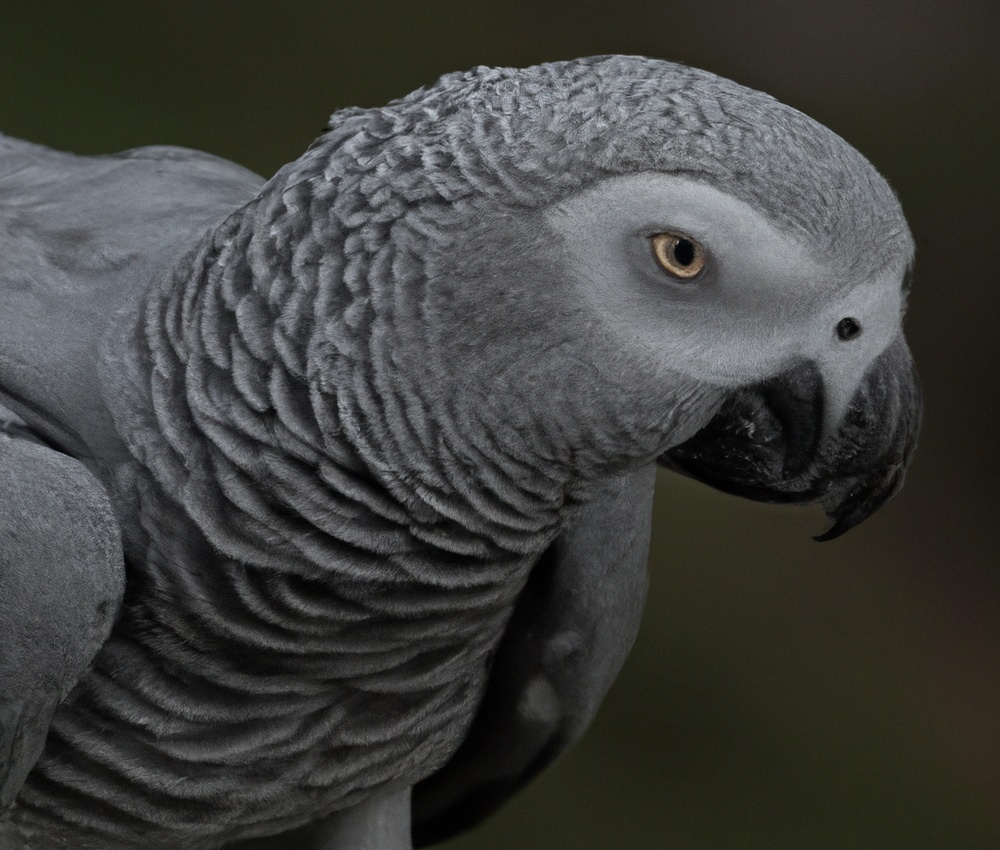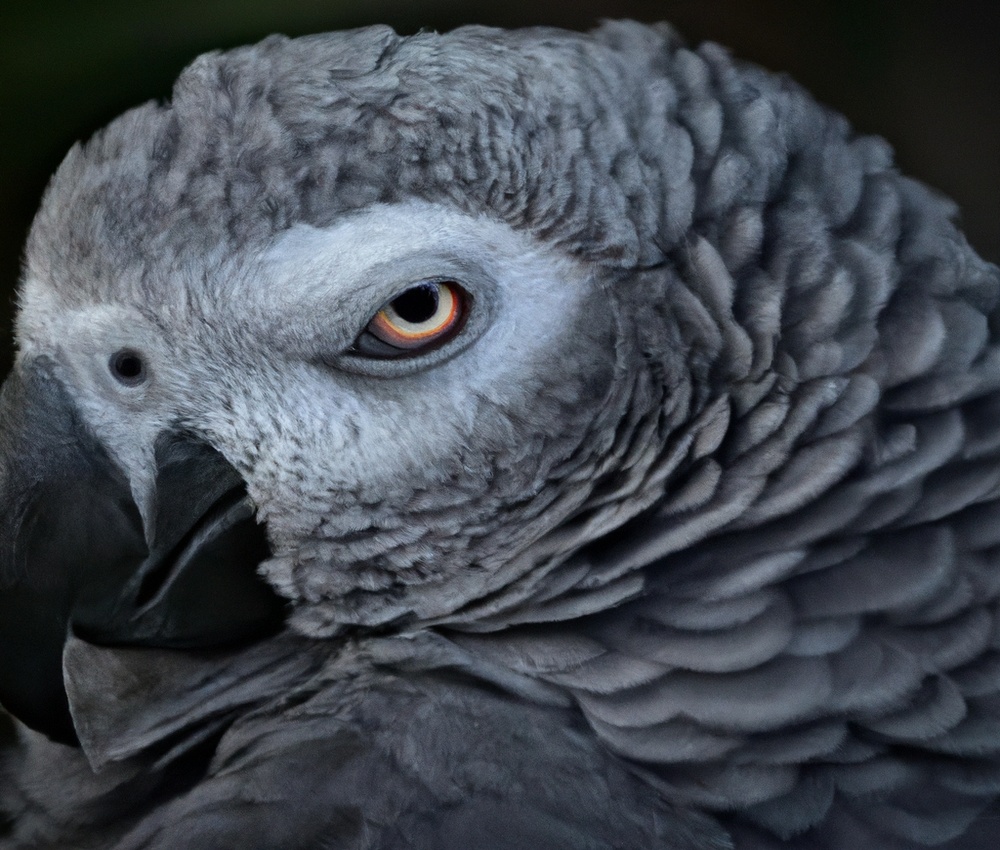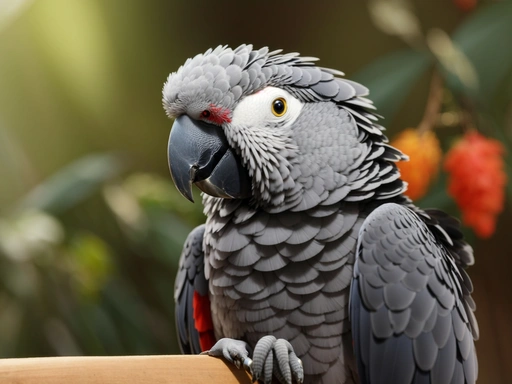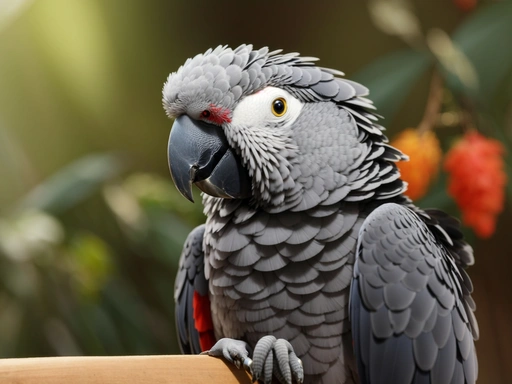How Do I Choose The Right Cage For My African Grey Parrot?
Key Takeaways:
- Consider the size and spacing of the bars to ensure your African Grey Parrot cannot escape or get stuck.
- Opt for a cage with a play top and extra perches to provide mental stimulation and exercise for your bird.
- Look for a cage made of durable, easy-to-clean materials to ensure the health and safety of your parrot.
- Ensure the cage has secure locks and latches to prevent any accidental openings.
Are you ready to give your African Grey Parrot the home of their dreams? Choosing the right cage for your feathered friend is crucial for their happiness and well-being.
But with so many options out there, how do you know which one is right for your parrot?
In this article, I’ll be sharing my expertise on how to choose the perfect cage for your African Grey Parrot. We’ll dive into their exercise and socialization needs, the factors to consider before purchasing a cage, different types of cages to choose from, essential cage accessories, and safe materials.
Get ready to create a cozy and stimulating environment that your African Grey Parrot will love!
| Factors | Considerations |
|---|---|
| Cage Size | Large enough for the parrot to fully stretch its wings and move around comfortably |
| Bar Spacing | Narrow enough to prevent the parrot from escaping or getting its head stuck |
| Construction Material | Strong, durable, and non-toxic materials such as stainless steel or powder-coated wrought iron |
| Access Doors | Multiple access doors for easy cleaning and feeding |
| Perches | Various sizes and textures to promote foot exercise and prevent foot problems |
| Toys and Enrichment | Plenty of toys and interactive items to stimulate the parrot’s intelligence and prevent boredom |
| Cleaning and Maintenance | Easy to clean and remove waste, with removable trays and grates |
| Location | Place the cage in a quiet, well-lit area, away from drafts and direct sunlight |
Understanding the needs of African Grey Parrots
African Grey Parrots have specific needs that must be understood and met.
Let’s take a closer look at their exercise requirements, socialization needs, and mental stimulation requirements.
Exercise requirements for African Grey Parrots
African Grey Parrots are highly intelligent and active birds.
They require a significant amount of exercise to stay physically and mentally stimulated.
Providing them with daily opportunities for exercise is essential for their overall well-being.
Here are some important exercise requirements for African Grey Parrots:
- Flight Time: African Grey Parrots need plenty of space to fly and stretch their wings. It is recommended to provide them with a dedicated space, such as a flight cage or a bird-proofed room, where they can have daily supervised flight time.
- Playtime: Along with flight, African Grey Parrots also enjoy playing and exploring. Provide them with a wide range of toys, such as puzzle toys, foraging toys, and chew toys, to keep them engaged and physically active.
- Social Interaction: African Grey Parrots are highly social creatures and thrive on social interaction. Spending quality time with your parrot, providing them with mental stimulation, and engaging in interactive play sessions are all ways to fulfill their exercise needs.
- Environmental Enrichment: Creating an enriched environment for your African Grey Parrot is crucial for their exercise requirements. Include perches of different sizes and textures, swings, ladders, and ropes to encourage natural movement and climbing.
Remember, exercise is not only important for your African Grey Parrot’s physical health, but it also helps prevent boredom and behavioral issues.
By providing them with a variety of exercise opportunities and social interaction, you can ensure a happy and healthy life for your feathered friend.
Socialization needs of African Grey Parrots
Socialization is crucial for the well-being of African Grey Parrots. They thrive on social interaction, both with their human caregivers and other birds.
Daily interaction, handling, and playtime help prevent boredom and promote a strong bond.
Providing opportunities for mental stimulation and socialization is essential for the happiness and mental health of African Grey Parrots.

Mental stimulation requirements for African Grey Parrots
African Grey Parrots are highly intelligent and curious birds, so mental stimulation is essential for their well-being. Here are some important requirements to keep in mind:
- Provide plenty of toys and puzzles that offer mental challenges, such as foraging toys or puzzle feeders. This will keep your parrot engaged and mentally active.
- Rotate and introduce new toys regularly to prevent boredom. This will keep your African Grey Parrot stimulated and prevent them from losing interest in their environment.
- Offer opportunities for social interaction and bonding. African Grey Parrots are social animals, so spending quality time with them, talking, and providing affection can provide mental stimulation and help prevent loneliness.
- Teach your parrot new tricks and commands. African Grey Parrots are known for their exceptional learning abilities, so training sessions can provide mental stimulation and strengthen the bond between you and your bird.
- Create an enriched environment with different textures, colors, and sounds. This can be achieved by introducing natural branches, hanging toys, and providing a variety of perches within the cage.
By providing these mental stimulation requirements, you can ensure your African Grey Parrot leads a happy and fulfilled life.
Factors to consider before buying a cage for an African Grey Parrot
Before buying a cage for your African Grey Parrot, there are a few important factors to consider.
Size and spacing of the cage
The size and spacing of the cage for your African Grey Parrot is crucial for their well-being. Make sure the cage is large enough for them to fully stretch their wings and move around comfortably.
The spacing between the bars should be narrow enough to prevent any accidents or escape attempts.
Bar spacing and material
Bar spacing and material are important considerations when choosing a cage for your African Grey Parrot. The bar spacing should be narrow enough to prevent your bird’s head from getting stuck but wide enough to allow them to safely move around.
Opt for cage bars made of stainless steel or powder-coated metal for durability and ease of cleaning.
Avoid cages with toxic materials like lead or zinc, as they can be harmful to your parrot’s health.
Cage shape and design
When choosing a cage shape and design for your African Grey Parrot, it’s important to consider their natural behaviors and needs. Look for a cage that provides plenty of horizontal space for your parrot to move and climb.
Avoid cages with narrow or round shapes, as they can restrict movement.
Opt for a rectangular or square-shaped cage that allows for proper wing extension. Additionally, look for a cage with a sturdy frame and secure door locks to ensure the safety of your parrot.

Ease of cleaning and maintenance
Cleaning and maintaining an African Grey Parrot’s cage is essential for their health and well-being. Look for a cage that is easy to clean, with removable trays and grates.
Choose a cage with wide doors for easy access, and consider the material of the cage, as some are easier to wipe clean than others.
Additionally, select a cage that is sturdy and durable, as this will make maintenance easier in the long run. Regularly clean the cage to prevent the build-up of bacteria and ensure a clean and healthy environment for your African Grey Parrot.
Location and placement of the cage
The location and placement of the cage is important for the well-being of your African Grey Parrot. Find a quiet area away from noise and drafts.
Avoid direct sunlight and busy areas.
Place the cage at eye level and in an area where your parrot can see and interact with you and your family. Ensure the cage is stable and secure.

Different types of cages suitable for African Grey Parrots
African Grey Parrots can be housed in different types of cages, such as flight cages, playtop cages, dome top cages, and travel cages.
Flight cages
Flight cages provide ample space for African Grey Parrots to stretch their wings and engage in natural flight behaviors.
They are typically larger in size and have a wide horizontal shape, allowing birds to move around freely.
It’s important to choose a flight cage that provides enough space for your African Grey Parrot to fly from one end to the other without hitting the sides or obstacles.
Flight cages also come with multiple perches and accessories to encourage exercise and mental stimulation.
Playtop cages
Playtop cages are a popular choice for African Grey Parrots.
They feature a built-in play area on the top of the cage, providing additional space for your parrot to exercise and play.
This playtop area typically includes perches, ladders, and sometimes even toys.
It’s a great way to encourage physical activity and mental stimulation for your parrot.
Plus, it gives them a chance to interact with their environment outside of the cage.
Just make sure the playtop is securely attached and that the materials are safe for your parrot.
Dome top cages
Dome top cages are a popular choice for African Grey Parrots.
They provide ample space for the bird to move around and spread its wings.
The dome shape allows for extra headroom, which is important for these intelligent birds.
The curved design also prevents droppings from accumulating on top of the cage.
Overall, dome top cages offer a practical and comfortable living space for African Grey Parrots.

Travel cages
Travel cages are specifically designed for ease of transportation and are essential for taking your African Grey Parrot on trips or visits to the veterinarian. Some key considerations for travel cages include size, durability, and portability.
Opt for a sturdy cage that provides enough space for your parrot to move around comfortably.
Look for secure latches and a design that can easily fit in your vehicle. A travel cage should also have removable food and water bowls for convenience.
Cage accessories for African Grey Parrots
When it comes to cage accessories for African Grey Parrots, there are a few key items to consider.
Perches
Perches are essential for African Grey Parrots as they provide a place for them to rest and exercise their feet. Choose natural wood perches of varying sizes to promote optimal foot health.
Avoid perches with sandpaper covering, as they can cause skin irritation and foot problems.

Toys and enrichment items
Toys and enrichment items are essential for keeping your African Grey Parrot mentally stimulated and entertained.
Some suitable options include puzzle toys, foraging toys, chew toys, and bird swings.
It’s important to provide a variety of toys to prevent boredom and encourage natural behaviors.
Regularly rotate and introduce new toys to keep your parrot engaged.
Always make sure the toys are made from safe materials and do not have small parts that can be swallowed.
Food and water bowls
Food and water bowls are essential accessories for African Grey Parrots. Choose stainless steel or ceramic bowls that are securely attached to the cage to prevent tipping.
Provide separate bowls for food and water to maintain hygiene.
Regularly clean and refill the bowls to ensure your parrot has access to fresh food and water.
Cage covers
Cage covers play an important role in providing a sense of security and promoting restful sleep for your African Grey Parrot.
They also help to regulate light exposure and create a quiet environment.
When choosing a cage cover, opt for one made from bird-safe materials that is easy to clean.
Consider investing in a cover that completely blocks out light to ensure your parrot gets the rest it needs.
Ladders and swings
Ladders and swings are important accessories for African Grey Parrots as they provide physical exercise and mental stimulation.
Make sure the ladders are wide and sturdy to prevent slipping, and choose swings that are large enough for your parrot to comfortably perch on.
Safe and unsafe materials for African Grey Parrot cages
When choosing materials for your African Grey Parrot’s cage, focus on safe options and avoid using unsafe materials.
Safe cage materials
When choosing safe cage materials for your African Grey Parrot, it’s important to prioritize their safety and well-being. Opt for materials that are non-toxic and free from any harmful chemicals.
Here are some safe cage materials to consider:
- Stainless Steel: This is a popular choice as it’s durable, easy to clean, and resistant to rust and corrosion.
- Powder-coated Metal: Make sure the coating is non-toxic and free from lead or zinc, as these can be harmful to birds.
- Acrylic: This is a safe and durable material that allows for visibility and easy cleaning.
- Natural Wood: Choose untreated, pesticide-free wood branches or perches, like those from fruit trees, as they provide a comfortable and natural surface for your parrot’s feet.
Remember, avoiding materials like galvanized metal, lead-based paints, or plastic coated with toxic chemicals is crucial for the health and safety of your African Grey Parrot.
Unsafe cage materials
Unsafe cage materials for African Grey Parrots include:
Frequently Asked Questions about choosing cages for African Grey Parrots
Can I keep my African Grey Parrot in an open-top cage?
Yes, you can keep your African Grey Parrot in an open-top cage. However, it is important to consider the needs and safety of your parrot.
Ensure that the cage is tall enough to prevent escape and that there are no hazards in the surrounding area.
Monitor your parrot regularly to ensure their well-being.
How often should I clean my African Grey Parrot’s cage?
Cleaning your African Grey Parrot’s cage is an important part of their care routine. It is recommended to clean the cage at least once a week to maintain a clean and healthy environment for your bird.
However, depending on the size of the cage, the number of birds, and their habits, you may need to clean more frequently.
Regularly removing droppings, replacing bedding, and sanitizing the cage will help prevent the build-up of bacteria and odors. Additionally, remember to clean food and water bowls daily to ensure your parrot has fresh and hygienic feeding areas.
Can I use wood perches in my African Grey Parrot’s cage?
Yes, you can definitely use wood perches in your African Grey Parrot’s cage.
Wood perches provide a more natural and comfortable surface for your parrot to perch on, mimicking their natural environment.
Just make sure the wood is safe and untreated, without any toxic substances or sharp edges.
Also, include perches of different sizes and shapes to promote foot exercise and prevent foot problems.
What size of cage is suitable for an adult African Grey Parrot?
The ideal cage size for an adult African Grey Parrot is a minimum of 36 inches in width, depth, and height.
Bigger is always better, as these intelligent birds love to explore and spread their wings.
Ensure that the bars are spaced no more than 3/4 inch apart to prevent escape or injury.
Is it better to have a single large cage or multiple smaller ones for African Grey Parrots?
For African Grey Parrots, it is generally better to have a single large cage rather than multiple smaller ones.
This is because African Grey Parrots require ample space to exercise, socialize, and mentally stimulate themselves.
A larger cage allows them to move around freely, stretch their wings, and engage in various activities.
It also provides them with a sense of security and comfort.
However, it is important to ensure that the cage is appropriately sized and designed to meet the specific needs of your African Grey Parrot.
Final Verdict
Choosing the right cage for your African Grey Parrot is crucial for their well-being and happiness. Consider their exercise, socialization, and mental stimulation needs when selecting a cage.
Pay attention to size, spacing, bar material, and ease of cleaning.
Flight, playtop, dome top, and travel cages are all suitable options. Equip the cage with perches, toys, food and water bowls, cage covers, and ladders or swings for enrichment.
Use safe materials for the cage and be mindful of cleaning frequency.
Ultimately, providing a comfortable and stimulating living space will ensure the overall health and contentment of your African Grey Parrot.







